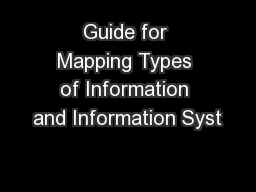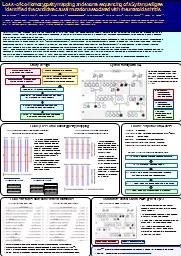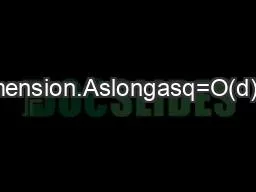PPT-Guide for Mapping Types of Information and Information Syst
Author : yoshiko-marsland | Published Date : 2017-09-20
NIST 80060 LUAI E HASNAWI IMPORTANT NOTICE This paper does not include any national security guidelines This guideline has been developed to assist Federal government
Presentation Embed Code
Download Presentation
Download Presentation The PPT/PDF document "Guide for Mapping Types of Information a..." is the property of its rightful owner. Permission is granted to download and print the materials on this website for personal, non-commercial use only, and to display it on your personal computer provided you do not modify the materials and that you retain all copyright notices contained in the materials. By downloading content from our website, you accept the terms of this agreement.
Guide for Mapping Types of Information and Information Syst: Transcript
Download Rules Of Document
"Guide for Mapping Types of Information and Information Syst"The content belongs to its owner. You may download and print it for personal use, without modification, and keep all copyright notices. By downloading, you agree to these terms.
Related Documents














